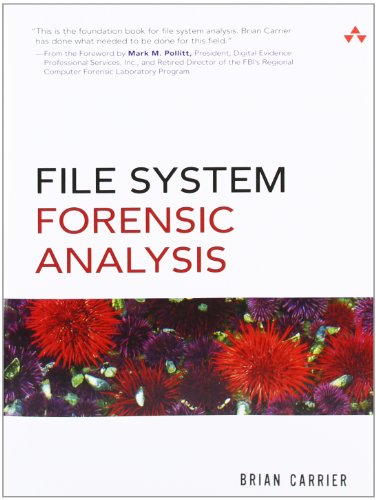File System Forensic Analysis download
Par copland olivia le dimanche, août 28 2016, 13:07 - Lien permanent
File System Forensic Analysis by Brian Carrier


File System Forensic Analysis Brian Carrier ebook
ISBN: 0321268172, 9780321268174
Publisher: Addison-Wesley Professional
Format: chm
Page: 600
I am not going to delve into the depths of the format of NTFS because it has already been explained in numerous books like File System Forensics by Brain Carrier. This post focuses on the two common sources of date/times that can be somewhat misleading. I have recently seen a few listserv messages regarding determining when the Operating System was installed. Sorry if this is in the wrong place but I have tried to find articles about this topic but they all seem to be dead discussions or not directly related. Most digital evidence is stored within the computer's file system, but understanding how file systems work is one of the most technically challenging concepts for a digital investigator because there exists little documentation. I'm pretty sure this dude dreams in binary. This week, we have a wealth of File System information, new and old, updates to the popular and versatile RegRipper program, and some very promising research in the area of memory forensics. I was asked to speak on the topic of “Linux Filesystems”, and I have chosen to focus on the ext2 and ext3 filesystem data structures. The key to forensics is freezing the environment as close to the point of compromise as possible. If you'd like to learn how to become a computer forensics investigator, also known as a computer forensic specialist, this article will guide you through the requirements as well as career pathways and salary information. Images/Analysis Challenges Lance's Forensic Practicals (#1 and #2) (no EnCase? Here's a starter list: File System Forensic Analysis, Brian Carrier. Back when I was first figuring out how to acquire the Samsung Galaxy Camera, I did a file system dump using Cellebrite's UFED Logical.